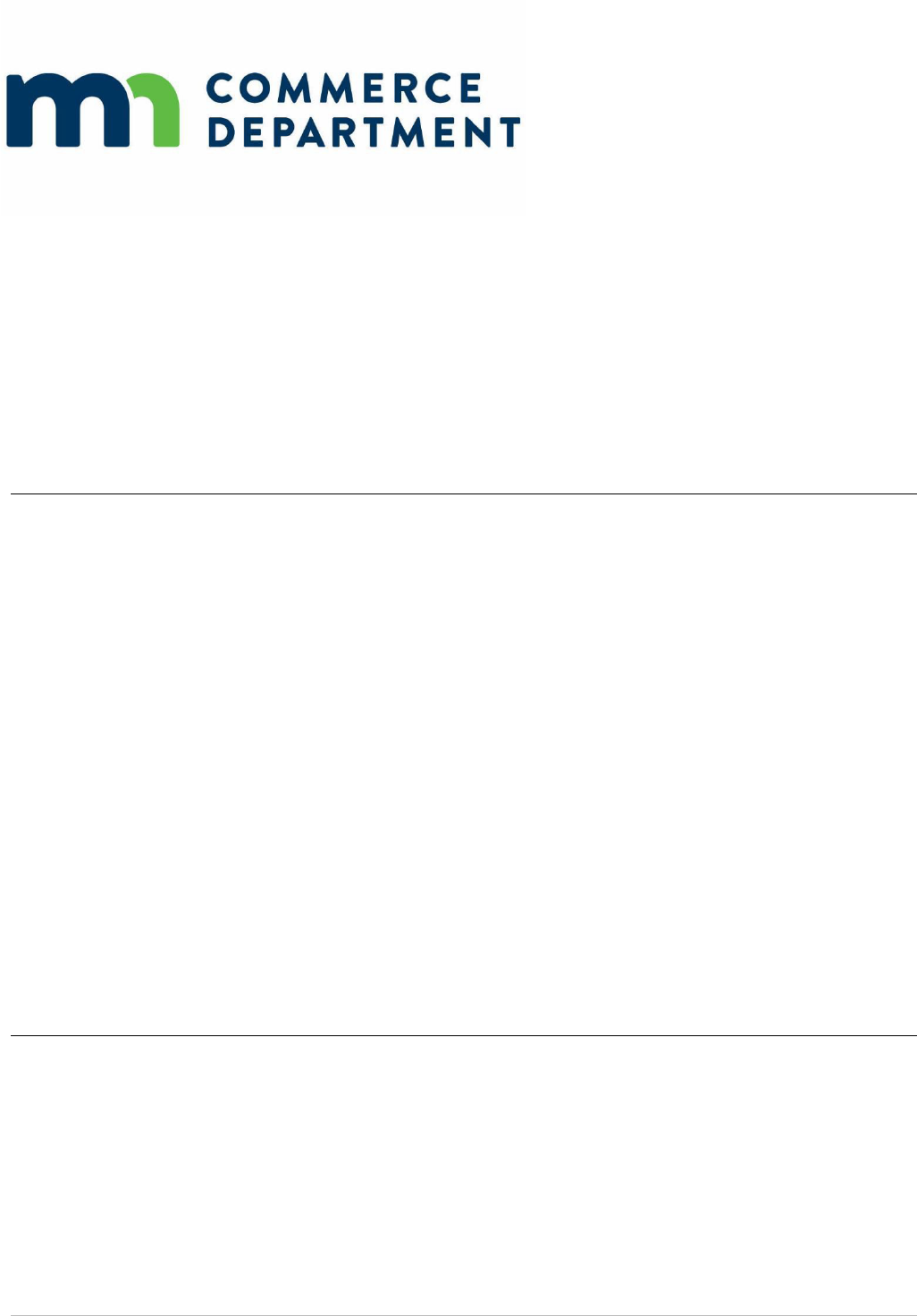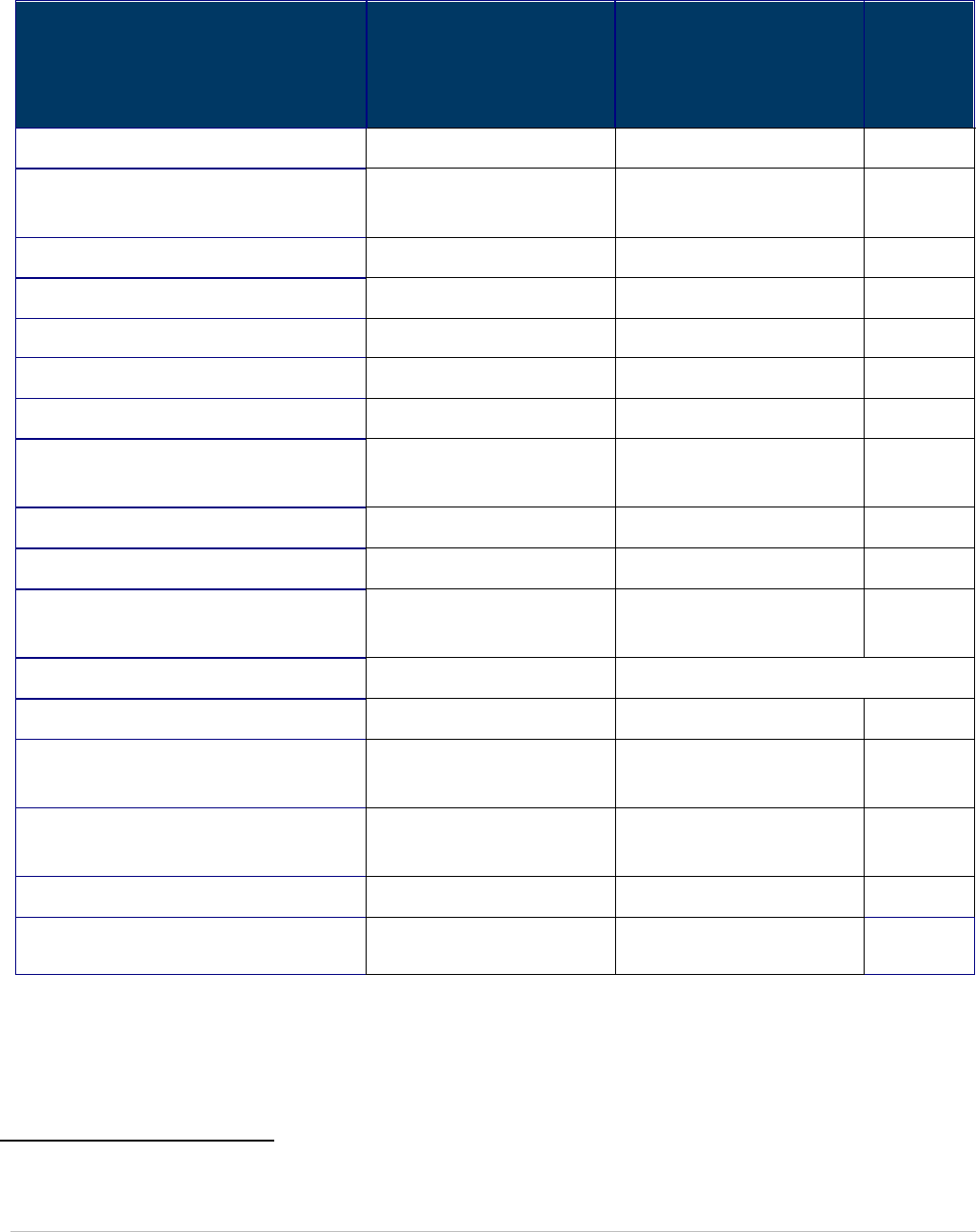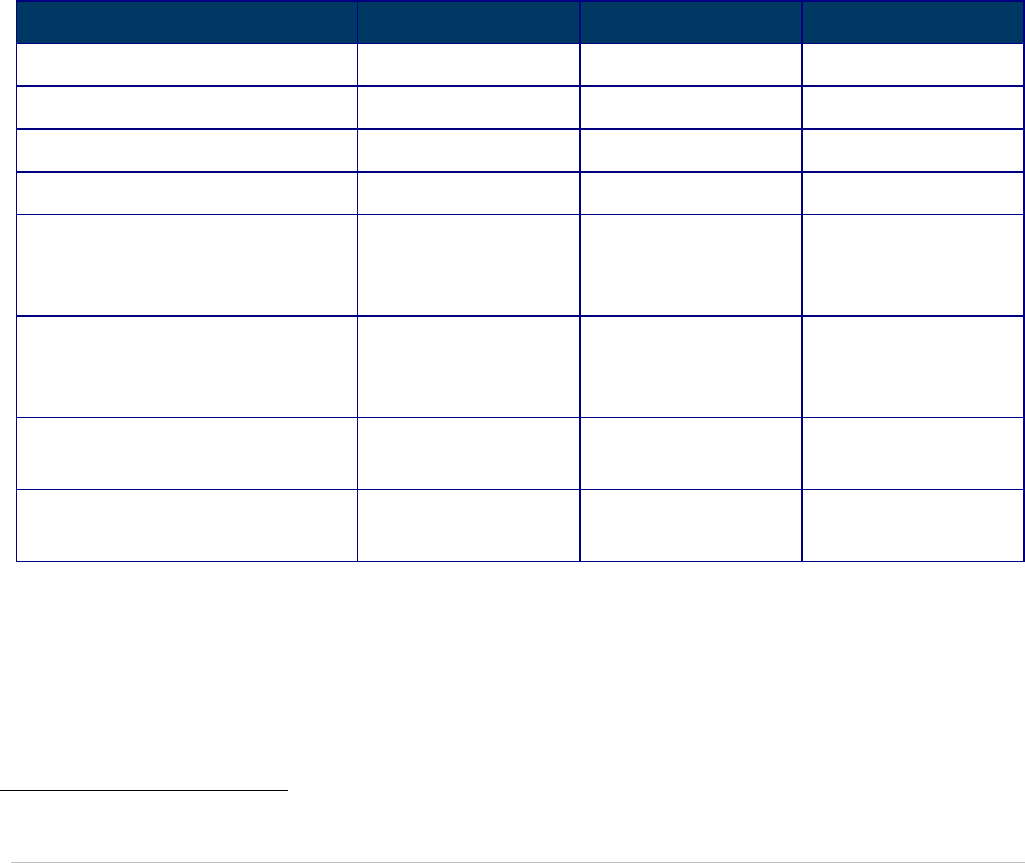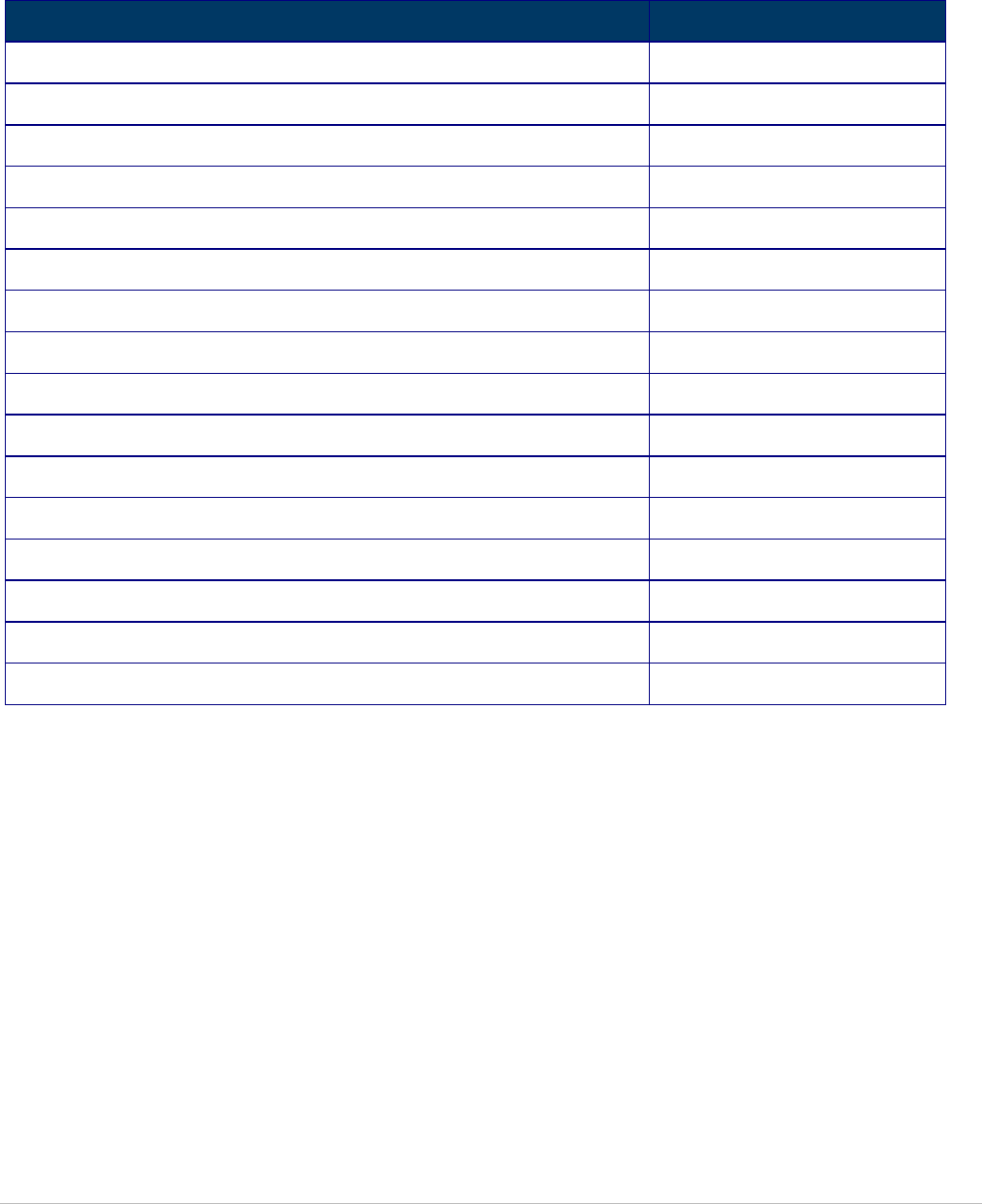
Minnesota Renewable Energy Standard: Utility Compliance
1
Minnesota Renewable Energy
Standard:
UTILITY COMPLIANCE
January 12, 2023
Prepared by
Minnesota Department of Commerce, Division of Energy Resources
Pursuant to Minnesota Statute 216B.1691, subd. 3(b)

Minnesota Renewable Energy Standard: Utility Compliance
2
Table of Contents
Introduction .................................................................................................................................................. 4
Legislative History ................................................................................................................................................... 5
Adoption of a Renewable Energy Objective ....................................................................................................... 5
Adoption of a Renewable Energy Standard ........................................................................................................ 5
RES Reporting Requirements.............................................................................................................................. 9
Table 1: 2019 RES Compliance.......................................................................................................................... 11
Ability to Comply with RES Requirements in the Future .................................................................................. 12
Table 2: Estimated Year through which the Utility can Comply with RES ....................................................... 13
Obstacles and Potential Solutions for Meetings the RES Requirements .......................................................... 13
Mitigating Undesirable Economic Impacts on Ratepayers ............................................................................... 14
Solar Energy Standard (SES) Compliance.......................................................................................................... 14
Summary and Conclusion ..................................................................................................................................... 16

Minnesota Renewable Energy Standard: Utility Compliance
3
Minnesota Department of Commerce
Mission
For more than 150 years, the Minnesota Department of Commerce and its predecessor agencies have served
Minnesotans. Our mission is to protect and assist consumers, to ensure a strong, competitive and fair
marketplace, and to engage people and communities across the state.
Our Strategic Priorities
• Protect the public interest through consumer protection, consumer education, assistance to consumers,
safety, health and financial security, and lowering inequities.
• Serve as a trusted public resource for consumers and businesses by listening and learning from the
Minnesotans Commerce services, being effective stewards of public resources, advocating for Minnesota
consumers and develop a policy, programmatic, and regulatory environment that meets their needs.
• Reduce economic barriers within Commerce regulatory oversee and reduce disparities within those of all
races, ethnicities, religions, economic statuses, gender identities, sexual orientations, (dis)abilities, and zip codes.
• Ensure all, especially historically disadvantaged Minnesotans, are resilient to Minnesota’s climate and
engaged in advancing efforts to mitigate climate change.
• Ensure a strong, competitive, and fair marketplace for Minnesotans.
For more information about the Department of Commerce: mn.gov/commerce.
For more information about Commerce’s work with renewable energy: mn.gov/commerce/energy.
Copyright
All material in this report is protected by copyright. The Minnesota Department of Commerce claims copyright on
all intellectual property created by the agency and reserves the right to reproduce, distribute, or display the
material, in addition to authorizing others to do so.
Some of the material on this report may be copyrighted by others. The Department of Commerce cannot grant
permission to use or reproduce others' copyrighted material.
Contact the Minnesota Department of Commerce for permission to use or reproduce any material in this report.

Minnesota Renewable Energy Standard: Utility Compliance
4
Report to the Minnesota Legislature
Progress on Compliance by Electric Utilities with the Minnesota Renewable
Energy Objective and the Renewable Energy Standard
The Minnesota Department of Commerce, Division of Energy Resources (Commerce or the Department) submits
the following report on the progress of Minnesota’s electric utilities’ compliance with the Minnesota Renewable
Energy Standard (RES) contained in Minnesota Statute section 216B.1691.
All of the utilities subject to the Minnesota RES have demonstrated compliance with the 2021 Renewable Energy
Standard requirements.
Pursuant by Minnesota Statute 3.197: This report cost approximately $1061.00 to prepare, including staff time.
Introduction
Commerce provides this report in compliance with Minnesota Statute section 216B.1691, subdivision 3(b), which
requires a bi-annual report to the Legislature on “the progress of utilities in the state, including the progress of
each individual electric utility, in increasing the amount of renewable energy provided to retail customers,” along
with the compilation of the following information from each utility:
• The status of the utility’s renewable energy mix relative to the objective and standards;
• Efforts taken to meet the objective and standards;
• Any obstacles encountered or anticipated in meeting the objective or standards; and
• Potential solutions to the obstacles.
This RES Report is divided into the following sections:
• Legislative History
• RES Reporting Requirements
• 2021 RES Compliance
• Solar Energy Standard (SES) Compliance
• Ability to Comply with RES Requirements in the Future
• Obstacles and Potential Solutions for Meeting Future RES Requirements
• Mitigating Undesirable Economic Impacts on Ratepayers
• Summary and Conclusion

Minnesota Renewable Energy Standard: Utility Compliance
5
Legislative History
Adoption of a Renewable Energy Objective
In 2001, the Minnesota Legislature first enacted the Minnesota Renewable Energy Objective contained in
Minnesota Statute section 216B.1691. As originally enacted, the Minnesota Renewable Energy Objective
Statute required electric utilities to “make a good faith effort” to obtain 10 percent of their Minnesota retail
energy sales from eligible energy sources by 2015, and to obtain 0.5 percent of their renewable energy from
biomass technologies. Under the REO Statute, Xcel Energy was required to meet a 10 percent renewable
energy standard.
Adoption of a Renewable Energy Standard
During the 2007 Legislative session, Minnesota Statute section 216B.1691 was amended to:
1. Establish a Renewable Energy Standard with specified mandated renewable energy goals
beginning in 2010;
2. Amend the definition of an eligible energy technology;
3. Require the Minnesota Public Utilities Commission (Commission) to establish a trading system for
renewable credits; and
4. Establish criteria under which the Commission may waive or extend the deadline for meeting the
RES targets.
The Renewable Energy Standard
Consistent with the earlier Renewable Energy Objective, the Renewable Energy Standard Statute requires that
a utility generate or procure at least one percent of its retail electric sales from an eligible energy technology
beginning in 2005 increasing to seven percent (7%) by 2010. However, unlike the Renewable Energy Objective,
the Renewable Energy Standard mandates that electric utilities procure this level of energy. Beginning in 2010
for Xcel, and 2012 for all other utilities, the Renewable Energy Standard Statute added Minnesota Statute
section 216B.1691, subd. 2(a) and (b) to require:
(a) Except as provided in paragraph (b), each electric utility shall generate or procure sufficient
electricity generated by an eligible energy technology to provide its retail customers in Minnesota, or
the retail customers of a distribution utility to which the electric utility provides wholesale service, so
that at least the following standard percentages of the electric utility’s total retail electric sales to
retail customers in Minnesota is generated by eligible energy technologies by the end of the year
indicated:
1) 2012
12 percent
2) 2016
17 percent
3) 2020
20 percent
4) 2025
25 percent
(b) An electric utility that owned a nuclear generating facility as of January 1, 2007, must meet the
requirements of this paragraph rather than paragraph (a). An electric utility subject to this

Minnesota Renewable Energy Standard: Utility Compliance
6
paragraph must generate or procure sufficient electricity generated by an eligible energy technology
to provide its retail customers in Minnesota or the retail customers of a distribution utility to which
the electric utility provides wholesale electric service so that at least the following percentages of the
electric utility’s total retail electric sales to retail customers in Minnesota is generated by eligible
energy technologies by the end of the year indicated:
1) 2010
15 percent
2) 2012
18 percent
3) 2016
25 percent
4) 2020
30 percent
Of the 30 percent in 2020, at least 25 percent must be generated by wind energy conversion systems
and the remaining five percent by other eligible energy technologies.
In its March 19, 2010 Order, the Commission clarified the percentages of total retail sales that utilities must
generate or procure from renewable energy apply for every year forward until the next step in percentages
identified by the statute. Consequently, for 2017 Xcel Energy’s Renewable Energy Standard requirement
remained at 25 percent, and all other utilities remained at 17 percent.
In 2010, the Renewable Energy Standard Statute definition of total retail electric sales was amended to exclude
“the sale of hydroelectricity supplied by a federal power marketing administration or other federal agency,
regardless of whether the sales are directly to a distribution utility or are made to a generation and
transmission utility and pooled for further allocation to a distribution utility.” The amendment results in the
exclusion of power provided by the Western Area Power Administration from total retail sales.
Changes to the Definition of an Eligible Energy Technology
Minnesota Statute section 216B.1691, subdivision 1 defines an eligible energy technology as one that:
Generates electricity from the following renewable energy sources: (1) solar; (2) wind; (3)
hydroelectric with a capacity of less than 100 megawatts; (4) hydrogen provided that after January
1, 2010, the hydrogen must be generated from the resources listed in this clause; or (5) biomass,
which includes, without limitation, landfill gas; an anaerobic digester system; the predominantly
organic components of wastewater effluent, sludge, or related by-products from publicly owned
treatment works, but not including incineration of wastewater sludge to produce electricity; and an
energy recovery facility used to capture the heat value of mixed municipal solid waste or refuse-
derived fuel from mixed municipal solid waste as a primary fuel.
This definition of an eligible energy technology reflects a number of changes made by the Legislature
since eligible technologies were originally defined under the Renewable Energy Objective Statute.
Specifically, the capacity of hydroelectric facilities eligible for Renewable Energy Standard
compliance was increased from 60 to 100 megawatts, and the definition of biomass was clarified to
include landfill gas and anaerobic digester systems. Finally, the restriction was lifted on Xcel Energy’s
ability to count biomass and wind generation from its Prairie Island legislative mandates.
1
The 2007
1
As part of earlier Legislative authorization for additional storage for spent nuclear fuel at Xcel’s Prairie Island nuclear facility,
Xcel was required to obtain 825 MW of wind energy (Minnesota Statute section 216B.2423) and 125 MW of biomass energy
(Minnesota Statute section 216B.2424).

Minnesota Renewable Energy Standard: Utility Compliance
7
amendments to the Renewable Energy Standard Statute render generation from these mandates
eligible to count toward Renewable Energy Standard compliance.
The Use of Renewable Energy Certificates to Meet Renewable Energy Standard
Requirements
The 2003 amendment to Minnesota Statute section 216B.1691, subd. 4, provided that the Commission “may
establish a program for tradable credits for electricity generated by eligible energy technology.” The 2007
amendment to Minnesota Statute section 216B.1691, subd. 4 required the Commission to establish a program
for tradable Renewable Energy Credits (RECs) by January 1, 2008, and to require all electric utilities to
participate in a Commission-approved REC tracking system once such a system was in operation.
In an October 2007 Order, the Commission approved the use of the Midwest Renewable Energy Tracking system
(M-RETS) as the Renewable Energy Credits tracking system under Minnesota Statute section 216B.1691, subd.
4(d), and required Minnesota utilities to participate. In its December 18, 2007, Order Establishing Initial
Protocols for Trading Renewable Energy Credits, the Commission adopted a four-year shelf life for RECs
2
. That
means the Renewable Energy Credits is eligible for use in meeting the Renewable Energy Standard
requirements in the year of generation and for four years following the year of generation.
Finally, in its December 3, 2008 Third Order Detailing Criteria and Standards for Determining Compliance under
Minn. Stat. §216B.1691 and Setting Procedures for Retiring Renewable Energy Credits, the Commission directed
utilities to begin retiring Renewable Energy Credits equivalent to one percent of their Minnesota annual retail
sales for the 2008 and 2009 compliance year by May 1st of the following year. Upon retirement, Renewable
Energy Credits are transferred into a specific Minnesota Renewable Energy Standard retirement account and
once retired, are not available to meet other state or program requirements, thus addressing the statutory
prohibition against double-counting the Renewable Energy Credits while also promoting the environmental
benefits of renewable energy. The Commission further directed the utilities to submit an annual compliance
filing demonstrating their compliance with the Renewable Energy Standard by June 1st.
Criteria for Waiving or Extending the Renewable Energy Standard Requirements
The Renewable Energy Standard Statute was amended to include criteria under which the Commission may
find it in the public interest to modify or delay implementation of the Renewable Energy Standard
requirements. Among the factors the Commission must consider are:
1. The impact on customer utility costs, including the economic and competitive pressure on the utility’s
customers;
2. The effects on electric system reliability;
3. Technical advances and concerns;
4. Rejection or delays in obtaining site and route permits;
5. Delays, cancellations or non-delivery of necessary equipment for construction of a facility;
6. Transmission constraints; and
7. Other statutory obligations imposed on the Commission or utility.
2
In the Matter of a Commission Investigation into a Multi-State Tracking and Trading System for Renewable Energy Credits,
Docket No. E999/CI-04-1616, Order Establishing Initial Protocols for Trading Renewable Energy Credits (December 18, 2007).

Minnesota Renewable Energy Standard: Utility Compliance
8
Upon a petition by a utility, the Commission may modify or delay a Renewable Energy Standard under numbers
(1) to (3) “only if it finds implementation would cause significant rate impact, requires significant measures to
address reliability, or raises significant technical issues.” For the remaining items, Minnesota Statute section
216B.1691, subd. 2b allows modification or delay in the implementation of a standard only if the Commission
“finds that the circumstances described in those clauses were due to circumstances beyond an electric utility’s
control and make compliance not feasible.”
To date, no utility has requested a modification or delay in the implementation of the Renewable Energy Standard
requirements.
Solar Energy Standard
In 2013, the Minnesota Legislature adopted Minnesota Statute section 216B.1691, subd. 2f, establishing a Solar
Energy Standard (SES) requiring public utilities to obtain at least 1.5 percent (1.5%) of their total Minnesota
retail sales from solar energy by the end of 2020, with a goal of obtaining ten percent (10%) of Minnesota retail
sales from solar energy by 2030. The Solar Energy Standard also contained a small solar carve-out that requires
at least 10 percent (10%) of the 1.5 percent (1.5%) solar energy standard come from small solar facilities (Small
Solar Carve-out). The size threshold for the small solar carve-out was later increased from 20 kW to 40 kW for
all utilities subject to the SES. Public utilities with between 50,000 and 200,000 retail electric customers may
apply individual customers subscriptions of 40 kW or less to a commission approved community solar garden
program toward the ten percent Small Solar Carve-out goal.
Three companies are subject to the Solar Energy Standard: Minnesota Power, Ottertail Power Company, and
Xcel Energy. In addition to excluding cooperative and municipal utilities from the Solar Energy Standard
requirements, the Solar Energy Standard statute excludes retail sales to customers that are iron mining
extraction and processing facilities, or paper mills, wood products manufacturers, sawmills, or oriented strand
board manufacturers from the calculation of 1.5 percent (1.5%) of retail sales.

Minnesota Renewable Energy Standard: Utility Compliance
9
Reporting on the Rate Impact of Renewable Energy Standard Compliance
Minnesota Statute section 216B.1691, subd. 2e, was amended to require the Commission to determine a
uniform system for reporting the estimated rate impact of Renewable Energy Standard compliance. In its
January 6, 2015 Order in Docket E999/CI-11-852,
3
the Commission established reporting requirements for
estimating the rate impact of Renewable Energy Standard compliance, including:
• calculating the direct costs of renewable generation;
• adding the costs of any new transmission improvements needed for renewable power;
• subtracting costs of resources that would have been used in place of the renewable resources; and
• discussing any impacts that renewable generation had on the utility’s indirect costs (such as the effects on
baseload generation facilities).
3
In the Matter of Utility Renewable Energy Cost Impact Reports Required by Minnesota Statutes Section 216B.1691, Subd. 2e,
Docket No. E999/CI-11-852, Order Establishing Uniform Reporting System for Estimating Rate Impact of Minn. Stat.
§216B.1691, (January 6, 2015).

Minnesota Renewable Energy Standard: Utility Compliance
10
Renewable Energy Standard Reporting Requirements
Entities Subject to the Renewable Energy Standard Requirements
Minnesota Statute section 216B.1691, subd. 1(b) defines an electric utility as “a public utility providing electric
service, a generation and transmission cooperative electric association, a municipal power agency, or a power
district.”
Based on the statutory definition of an electric utility, the Commission has determined that the following
entities are subject to the Renewable Energy Standard Statute:
• Basin Electric Power Cooperative
• Central Minnesota Municipal Power Agency (CMMPA)
• Dairyland Power Cooperative
• East River Electric Cooperative
• Great River Energy (GRE)
• Heartland Consumer Power District
• Interstate Power and Light
4
• L&O Power Cooperative
• Minnkota Power Cooperative
• Minnesota Municipal Power Agency (MMPA)
• Minnesota Power
• Missouri River Energy Services
• Northwestern Wisconsin Electric Company
• Ottertail Power Company
• Southern Minnesota Energy Cooperative
• Southern Minnesota Municipal Power Agency (SMMPA)
• Xcel Energy
The definition of an electric utility contained in Minnesota Statute section 216B.1691, subd. 1(b) was amended
in 2007 to include a power district. Consequently, Heartland Consumer Power District is now subject to the
Renewable Energy Standard requirements. In its November 12, 2008 Order in Docket No. E999/CI-03-869, the
Commission found that East River Electric Power Cooperative and L&O Power Cooperative were required to file
separate RES reporting.
5
4
On June 8, 2015, the Commission approved the sale of Interstate Power and Light’s Minnesota electric distribution system
and assets, and the transfer of its Minnesota electric service rights and obligations, to Southern Minnesota Energy Cooperative
(SMEC). In the Matter of a Request for the Approval of the Asset Purchase and Sale Agreement between Interstate Power and
Light Company and Southern Minnesota Energy Cooperative, Docket No. E001, 115, 140, 105, 139, 124, 126, 145, 132, 114,
6521, 142, 135/PA-14-322, Order Approving Agreement Subject to Conditions, (June 8, 2015).
5
In the Matter of Detailing Criteria and Standards for Measuring an Electric Utility’s Good Faith Efforts in Meeting the
Renewable Energy Objectives Under Minn. Stat. §216B.1691, Docket No. E999/CI-03-869, Order Setting Filing Requirements
and Clarifying Procedures, (November 12, 2008).

Minnesota Renewable Energy Standard: Utility Compliance
11
Prior to this Order, L&O and East River’s Renewable Energy Standard compliance reporting was aggregated with
the reporting from Basin Electric. Finally, given its limited presence in Minnesota, the Commission granted
Northwestern Wisconsin Electric Company the discretion to report its renewable energy compliance information
as provided to the Wisconsin Public Service Commission.
2021 Renewable Energy Standard Compliance
Utilities subject to the Minnesota Renewable Energy Standard file an annual compliance filing each year on
June 1
st
. The most recent compliance filing was made on June 1, 2022 for compliance with 2021 Renewable
Energy Standard requirements (Docket No. E999/PR- 22-12). Minnesota Statute section 216B.1691 currently
requires Xcel Energy to obtain 30 percent (30%) of its Minnesota retail sales from renewables, and all other
utilities subject to Renewable Energy Standard requirements to obtain 20 percent (20%) of their Minnesota
retail sales from renewables.
Table 1, below, summarizes utility compliance with the 2021 requirements. All of the utilities subject to the
Minnesota Renewable Energy Standard have demonstrated compliance with the 2021 Renewable Energy
Standard requirements.

Minnesota Renewable Energy Standard: Utility Compliance
12
Table 1: 2021 Renewable Energy Standard Compliance
Utility
2021 Minnesota Retail
Sales (MWhs)
Total Renewable
Energy Certificates
Retired (for MN Retail
Sales)
Percent
Basin Electric
945,011
189,004
20%
Central MN Municipal Power
Agency
370,122
74,025
20%
Dairyland Power Cooperative
861,191
172,239
20%
East River Power Cooperative
603,082
120,669
20%
Great River Energy
10,746,506
2,152,900
20%
Heartland Power District
241,926
48,387
20%
L & O Power Cooperative
288,306
57,662
20%
Minnesota Municipal Power
Agency (MMPA)
1,865,862
373,173
20%
Minnesota Power
9,454,795 1,890,960
20%
Minnkota Power Cooperative
1,491,225 298,245
20%
Missouri River Energy Services
(MRES)
1,691,803
338,361
20%
Northwestern Wisconsin Power
6
(see footnote 6)
Otter Tail Power Company
2,593,158
518,632
20%
Southern Minnesota Electric
Cooperative
732,511
146,503
20%
Southern MN Municipal Power
Agency
2,882,669
576,534
20%
Xcel Energy
28,810,844
8,643,254
30%
Total
63,579,011
15,600,548
24.5%
Wind generation continues to be the largest source of renewables used to meet the Minnesota RES representing
approximately 60 percent (60%) of annual renewable generation, followed by hydroelectric generation at
approximately 35 percent (35%) with the balance split between biomass and solar generation.
6
Per the Commission’s November 12, 2008 Order in Docket No. E999/CI-03-869, Northwestern Wisconsin Electric is permitted
to comply with the Minnesota reporting requirements by submitting its renewable energy compliance information as reported to
the Wisconsin Public Service Commission. Northwestern Wisconsin submitted its Wisconsin RPS compliance report indicating
it retired 25,638 RECs towards its compliance in Wisconsin.

Minnesota Renewable Energy Standard: Utility Compliance
13
Solar Energy Standard Compliance
Minnesota Statute section 216B.1691 was amended by the 2013 Legislature to require public utilities to
generate or procure 1.5 percent of their Minnesota retail electric sales from solar energy by 2020. The statute
permits utilities subject to the SES to exclude retail sales to the mining and paper mill and wood products
manufacturing industries from the calculation of their Solar Energy Standard requirement. The statute further
requires that at least 10 percent (10%) of the 1.5 percent (1.5%) Solar Energy Standard goal be met by solar
energy from facilities with a nameplate capacity of 20 kW or less. Three utilities, Minnesota Power, Otter Tail
Power and Xcel Energy are subject to the Solar Energy Standard and are required to submit annual reports
detailing their efforts to comply. Table 2 provides a summary of the estimated amount of solar capacity and
solar energy needed to meet the 2021 Solar Energy Standard requirement.
Table 2: Summary of Utility Reporting on SES
Otter Tail
Minnesota Power
Xcel
MN retail sales (MWh)
2,593,158
8,896,839
28,810,844
Excluded Sales
65,520
5,960,138
Protected Data
7
MN retail sales subject to SES
2,527,638
2,936,701
TS
Annual solar generation (MWh)
277
17,386
1,258,823
Solar Renewable Energy
Certificates Needed to
Meet 2021 SES (MWh)
37,915
44,051
430,200
Solar Renewable Energy
Certificate Retired to
Meet 2021 SES (MWh)
37,915
44,052
430,200
Small Solar Carve-out
Requirement (MWh)
8
3,791
4,405
43,020
Small SRECs retired
(MWh)
2,192
4,406
43,020
7
Xcel’s Exempt sales data is protected because the small number of exempt customers could potentially lead to identification of
individual customer sales data.
8
The Small Solar Carve-out requirement is calculated as 0.15 percent of MN retail sales subject to SES.

Minnesota Renewable Energy Standard: Utility Compliance
14
Otter Tail Power Company
Otter Tail Power Company (Otter Tail) complied with the 2021 RES requirement and the 2021 non-small SES
requirements. Otter Tail partially complied with 2021 small-scale SES requirements through the purchase and
retirement of solar renewable energy credits (SRECS) at a cost of $75,531. Otter Tail also proposed to meet the
small-scale SES requirement going forward through the construction and ownership of up to 1.2MW
(approximately thirty 40kW AC) of solar projects. If approved by the Commission, Otter Tail would make a filing
detailing costs, program details, recovery strategy, and timing of the projects.
Otter Tail claimed that meeting the small-scale solar ten percent (10%) component for the 2021 program year
was challenging. While Otter Tail continued to grow its SREC inventory from customer-owned systems, the
marketplace for purchasing small SRECs outside of Otter Tail’s service area became non-existent. Otter Tail had
many discussions with REC brokers but was unable to purchase adequate small SRECs. Thus, Otter Tail fell short
of meeting the small-scale solar ten percent component for 2021.
The Department of Commerce recommended the Commission direct Otter Tail Power to retire SRECs from
utility scale projects to cover the shortfall in small Solar RECs for 2021. Upon submitting a compliance filing to
the PUC demonstrating that OTP retired additional utility scale SRECs to cover its shortfall, the Department
recommends that OTP be found to have made a good faith effort to meet the 2021 small solar requirement.
Otter Tail has retired the requisite SRECs.
Minnesota Power
Minnesota Power currently has three new solar projects underway that will result in approximately 20 MW of
new solar energy.
1) The Laskin Energy Park near Hoyt Lakes, Minnesota, will generate 9.6 MW of solar energy.
2) The Sylvan Solar Project near Minnesota Power’s Sylvan Hydro Station, west of Brainerd, Minnesota, will
generate 10 MW of solar energy.
3) The Jean Duluth Solar project, located in the city of Duluth, will generate 1.6 MW of solar energy.
When completed, Minnesota Power’s solar energy portfolio will grow to about 30 megawatts, including the 10-
megawatt installation they built at Camp Ripley, the Minnesota National Guard base near Little Falls.
The projects will help Minnesota Power meet the state of Minnesota’s Solar Energy Standard (SES) more
quickly. Minnesota Power also operates a community solar garden with a 40-kilowatt array in Duluth and a 1-
megawat array in Wrenshall, Minnesota, and continues to explore community solar options.
Minnesota Power continues to meet the Small Scale Carve-Out of the SES through its Community Solar Garden
and SolarSense Customer Solar Program. There were 290,928 kWh produced by SolarSense systems installed in
2021. The Community Solar Garden is fully subscribed, with 1,037 one kW blocks those customers are
subscribed to.
Xcel Energy
Xcel reported that it had approximately 826.29 MW of solar capacity from community solar gardens, 26.11 MW in
solar from facilities of 40 kW or less, and 271.31 MW of solar capacity from facilities over 40 kW that is registered
in M-RETS. Xcel has 262 MW of utility-scale solar projects, some of which are earmarked for its
Renewable*Connect green pricing pilot. The Company continues to offer incentives for the installation of rooftop
solar through its Solar*Rewards program.

Minnesota Renewable Energy Standard: Utility Compliance
15
The Second and Third Generation Solar*Rewards program offers incentives based on the system's energy
production to customers installing solar systems of less than 40 kW.
In June 2021, the Minnesota Legislature established a statewide Solar for Schools incentive program which
provides financial and technical assistance to schools looking to install solar. The part of this program directed to
Xcel Energy customers called the Solar*Rewards for Schools program is a subset of Xcel’s larger Solar*Rewards
program. The program offers a performance-based incentive on the amount of energy the school’s solar system
generates and an up-front payment based on the solar project size and the school’s financial need.
In its most recent Integrated Resource Plan (IRP) filing (Docket E002/RP-19-368), Xcel proposed to add 4,000 MW
of solar facilities over the forecast period, 2020-2034.
Ability to Comply with Renewable Energy Standards Requirements in the
Future
As noted above, for 2021, the Renewable Energy Standards requirement was 30 percent (30%) of Minnesota
retail sales for Xcel Energy, and 20 percent (20%) of Minnesota retail sales for all other utilities subject to the
requirement. Utilities may retire Renewable Energy Certificates towards Renewable Energy Standards
compliance up to four years from the date of generation. In addition, utilities may purchase excess Renewable
Energy Certificates from other utilities to meet their Renewable Energy Standards requirement or reallocate
Renewable Energy Certificates to Minnesota from their other state jurisdictions with lower Renewable Energy
Standards requirements. Iowa, Wisconsin and Minnesota have Renewable Energy Standards, whereas North
and South Dakota have voluntary Renewable Energy Objectives at 10 percent (10%).
As part of their bi-annual reporting, utilities were asked to provide the year through which the Company can
maintain its Renewable Energy Standards compliance with its current renewable portfolio. Table 3, below,
summarizes the year through which the utilities expect to comply with the Renewable Energy Standards.

Minnesota Renewable Energy Standard: Utility Compliance
16
Table 3: Estimated Year through which the Utility can Comply with
Renewable Energy Standards
Utility
Compliance through year
Basin Electric
2030
Central MN Municipal Power Agency (CMMPA) 2033
Dairyland Power Cooperative
2040
East River Power Cooperative
2025
Great River Energy
2040
Heartland Power District
2044
L&O Power Cooperative
2030
Minnesota Municipal Power Agency (MMPA)
2025
Minnesota Power
2050
Minnkota Power Cooperative 2045
Missouri River Energy Services (MRES)
2023
Northwest Wisconsin
See footnote 6
Otter Tail Power Company
2035
Southern Minnesota Electric Cooperative (SMEC)
2025
Southern MN Municipal Power Agency
2040
Xcel Energy
2040
All of the utilities, have sufficient renewable resources to meet compliance beyond 2022.

Minnesota Renewable Energy Standard: Utility Compliance
17
Obstacles and Potential Solutions for Meetings the Renewable Energy
Standards Requirements
The utilities provided comments on obstacles they have encountered or anticipate encountering to meeting the
RES requirements. Most of the utilities indicated that they had not experienced obstacles in meeting
Renewable Energy Standards compliance. The cost associated with integrating renewables into their energy
portfolio as the share of renewable energy increases was cited as a concern that is being evaluated.
Transmission constraints within Minnesota as well as constraints on the ability to transport excess wind energy
outside of Minnesota has typically been among the most noted obstacle cited by utilities in the past. Utilities
reported increasing costs of MISO and affected systems network transmission upgrades along with generation
interconnection queue study delays create challenges.
Mitigating Undesirable Economic Impacts on Ratepayers
Utilities were asked to identify efforts taken to adequately protect against undesirable economic impacts on
ratepayers, including limiting rate impacts to consumers. Many of the utilities cited efforts to secure long-term
contracts for renewables and transmission service as methods of limiting economic impacts. In addition, several
of the utilities have sold or purchased Renewable Energy Certificates in the market as a means of limiting rate
impacts to their ratepayers. The Midwest Renewable Tracking System is the tracking system approved by the
Commission for registering renewable projects and maintaining an accounting of each project’s renewable
generation in the form of a Renewable Energy Certificate. A Renewable Energy Certificate represents one
megawatt hour of renewable generation.
Ut
ilities comply with the Renewable Energy Standard by transferring the appropriate amount of Renewable
Energy Certificates, as determined by the appropriate percentage of their Minnesota retail sales, into a
retirement account. Utilities having more Renewable Energy Certificates than required to meet their
Renewable Energy Standard may choose to sell some of their excess certificates to utilities with a shortfall.
Utilities purchasing Renewable Energy Certificates typically do so because they have found that option to be a
reasonable cost method of meeting Renewable Energy Standards compliance or making up the difference in REC
need. Renewable Energy Certificates prices reported by the utilities typically ranged from between $0.25 to
$1.25 per Renewable Energy Certificates, although RECs from specific, narrowly defined generation types may be
higher.
Summary and Conclusion
The Minnesota Department of Commerce concludes that utilities complied with their 2021 RES obligations and
appear able to comply into the future. In addition, the three public utilities subject to the SES also complied
with their 2021 SES obligations.
